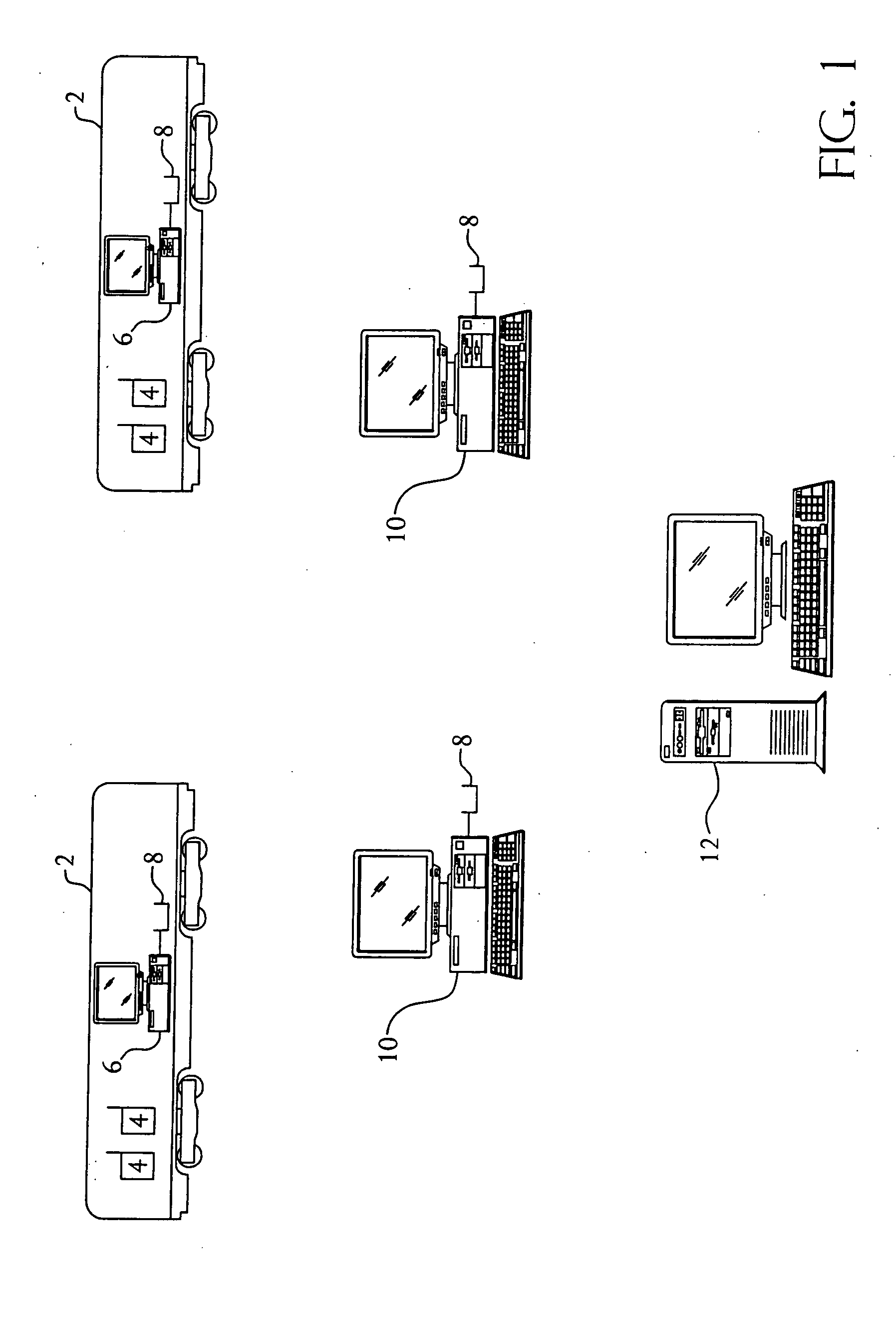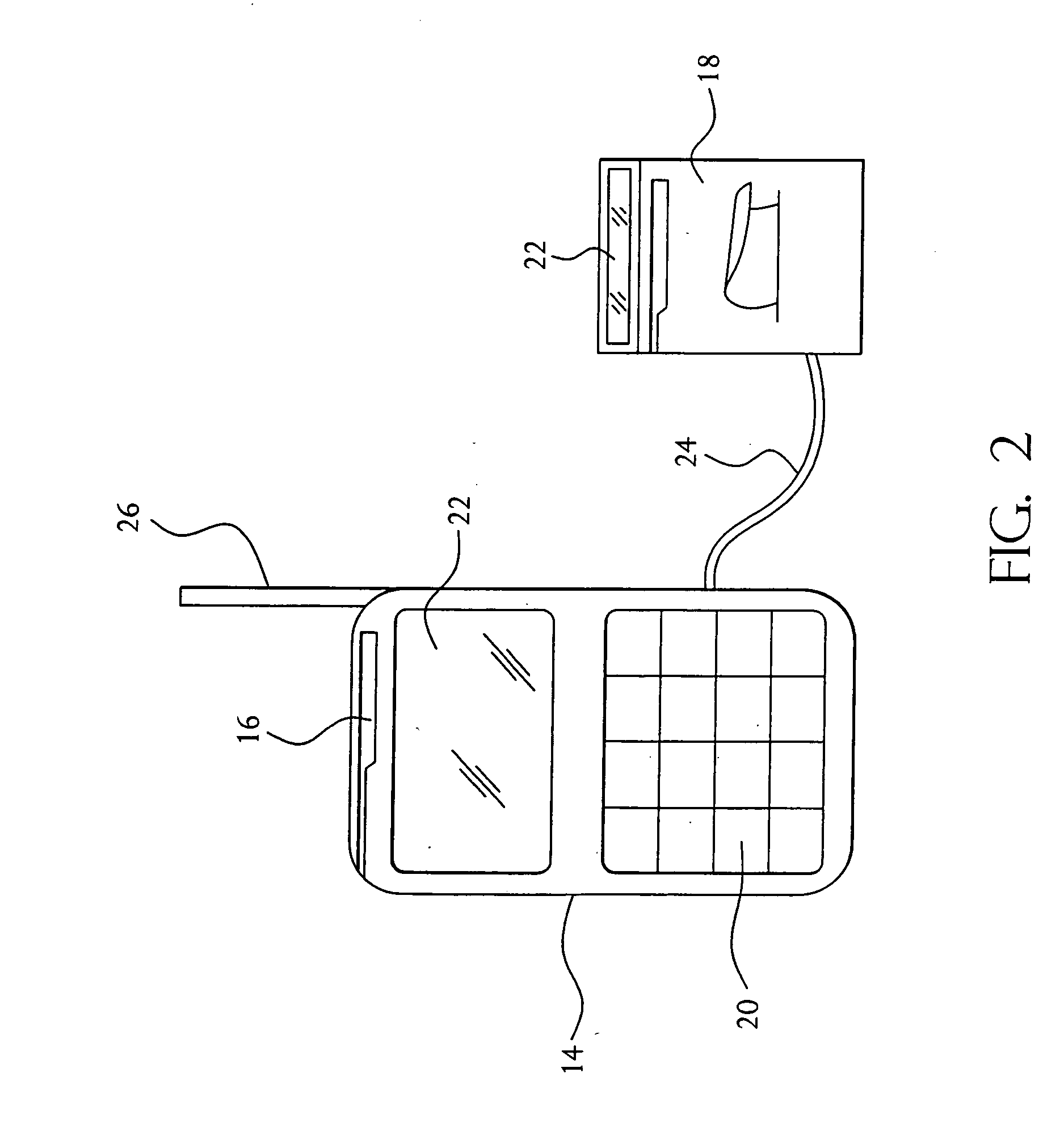Automated ticket collection system and method of collecting ticket information
a ticket collection and ticket information technology, applied in the field of data collection systems, can solve the problems of inability to find out how, train company does not have timely information, and train company does not know how many seats on each train have actually been used
- Summary
- Abstract
- Description
- Claims
- Application Information
AI Technical Summary
Problems solved by technology
Method used
Image
Examples
Embodiment Construction
[0018] A block diagram of the fare collection system of the present invention is shown in FIG. 1. The system is designed to collect tickets from passengers on vehicles 2 and communicate ticket data to a central computer 12 accessible by the operator of the system. In the embodiment of the invention described herein, the vehicle is a train, but the invention can be equally well implemented on other passenger mass transportation vehicles such as buses, airplanes or ships. Likewise, the data need not be ticket information, but could represent other types of information such as food, credit card, inventory, or passenger information. Further, the ticket, as described herein, could be any media able to contain data.
[0019] Typically operators of passenger trains operate large fleets of trains. Prior to boarding trains 2 passengers purchase tickets. In the present embodiment, issuance of tickets is controlled by a central reservation computer which creates a database of unique numbers for ...
PUM
 Login to View More
Login to View More Abstract
Description
Claims
Application Information
 Login to View More
Login to View More - R&D
- Intellectual Property
- Life Sciences
- Materials
- Tech Scout
- Unparalleled Data Quality
- Higher Quality Content
- 60% Fewer Hallucinations
Browse by: Latest US Patents, China's latest patents, Technical Efficacy Thesaurus, Application Domain, Technology Topic, Popular Technical Reports.
© 2025 PatSnap. All rights reserved.Legal|Privacy policy|Modern Slavery Act Transparency Statement|Sitemap|About US| Contact US: help@patsnap.com



